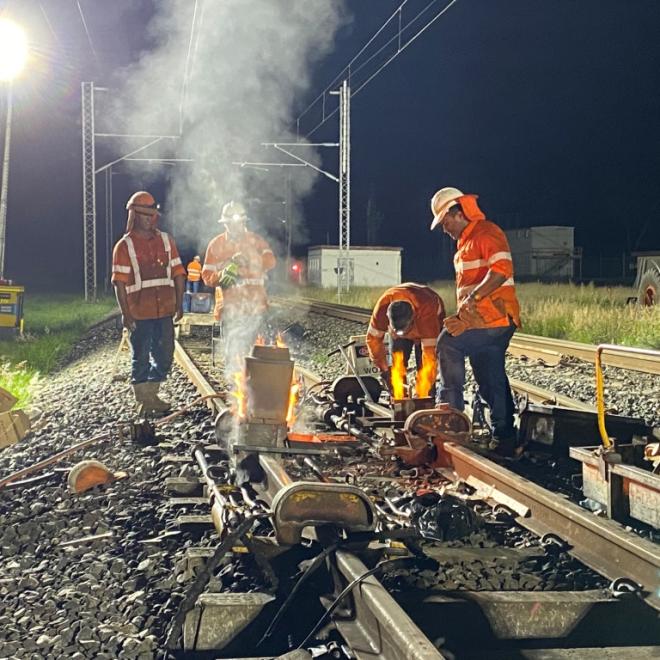
The role
Tasks include:
• determining the method and sequence of welding operations
• checking the equipment
• preparing the rail before welding
• ensuring the weld meets required standards

Skills required to be a Track Welder
- Physically fit
- Ability to work outdoors
Previous experience
Track Welders often come from a background in:
- construction or property services
- defence
- engineering or manufacturing
- railway track plant operations
- railway track work
- resource sector.
Minimum requirements
Track welders are required to hold a construction industry 'white card’ and complete a majority of units of competency from the TLI27120 Certificate II in Rail Infrastructure.
The differing techniques used for track welding mean that different welding-specific units of competency must be completed, depending on the technique(s) that may be used.
These units are:
- aluminothermic welding: Heat and cut materials using oxy-LPG equipment for the rail industry; Weld rail using aluminothermic welding process
- flashbutt welding: Weld rail using flashbutt welding process
- electric welding: Heat and cut materials using oxy-LPG equipment for the rail industry; Apply electric welding process to rail.
What a Track Welder's career progression can look like
Track welders may look to advance their career by moving into roles such as work group or team leader, track access coordinator, engineer technical specialist or in logistics or rail infrastructure.

What do I do next?
Our findings include information from the Australian Industry Standards' Seamless Future Rail Skills report. Take a look at their Track Welder Operator pathway.
For more information about becoming a Track Welder:
- talk to your careers adviser
- get in touch with your union
- contact your local TAFE
- if you already work in rail, talk to your employer.
